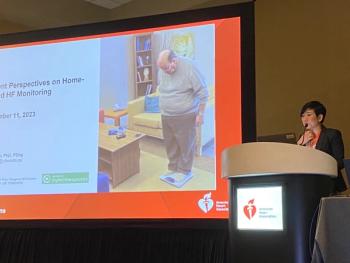
National health infrastructure prompts need for proper patient identification
In making the EHR available and successful, it is important to ensure that the information received belongs to the intended patient.
President Bush signed an executive order to create the position of a National Health Information Technology Coordinator in Health and Human Services. Shortly thereafter, Dr. David Brailer was appointed to the position. In this role, he is now leading the effort to create a National Health Information Infrastructure (NHII) by coordinating federal and private sector initiatives.
The main goal of the NHII is to develop a scalable and secure system for exchanging healthcare information on a national level. Implementing this vision to provide "health information when and where it is needed," requires a trustworthy means of validating the electronic identity of both the information requester and provider. This information will help guide medical decisions at the point of care, and will subsequently improve the quality of healthcare, reduce medical errors, and decrease healthcare costs.
PATIENT IDENTIFICATION
Of equal importance in making the EHR available and successful, is the ability to ensure the information received does in fact belong to the intended patient. Failure to collect complete patient information, misspellings and phonetic spellings, missing data, nicknames, aliases, newborns, swapped first and last names, typos and transpositions are just a few of the fundamental causes of improper patient identification.
The Institute of Medicine recently reported there were 195,000 deaths in the United States alone because of medical errors. Moreover, 10 out of 17 of those deaths were because of failure to correctly identify the patient. These "wrong patient errors" result in nearly 115,000 deaths every year-more than two-and-a-half times the number of breast cancer deaths annually. Industry studies have shown that duplication of EMRs within a single healthcare facility range from 9% to 11%, and within a multifacility organization, have reached as high as 30%.
These errors are systematic and cause incomplete or inappropriate medical care, which-as reported above-can be fatal.
CORE IDENTITY
For the NHII initiative to succeed, a highly reliable identity management infrastructure will need to reside at the core of the EHR system. Fortunately, in today's clinical settings, biometric technologies are increasingly being used to accurately identify patients.
Biometric technology provides the ability to identify an individual based on a unique physical characteristic. Fingerprint identification is the most accurate form of biometric technology, with its use for positive identification dating back over a century.
Fingerprint identification systems tend to overcome the problems often associated with other biometric technologies such as user acceptance, accuracy, size and cost. In healthcare settings, most patients are more than willing to place their finger onto a scanner for one to two seconds in order to be accurately identified and avoid possible medical errors.
BIOMETRICS AT WORK
The Catholic Health System (CHS) in Buffalo, N.Y., is one of the first healthcare organizations to introduce biometric technology to its patients.
After a multiyear study, CHS chose ultrasonic fingerprint biometric technology.
This technology is more appropriate for a healthcare setting because of ultrasound's ability to image through surface contaminations found on the finger or that build up on the fingerprint-scanning surface. This provides a consistently higher-quality image, which results in superior accuracy rates across all population groups.
A patient, wishing to enroll into the CHS system simply places their finger onto the biometric fingerprint reader. The caregiver associates or links this particular patient to the appropriate EMR and the entire enrollment process takes less than two minutes.
Upon return visits, the patient simply places one finger onto the biometric reader and within seconds the identity is confirmed and the correct EMR is retrieved.
It is clear that Dr. Brailer and his organization are leading a multiyear, aggressive program to reform the nation's healthcare system. This effort will be focused on meeting goals for better, faster, less-expensive clinical care.
Newsletter
Get the latest industry news, event updates, and more from Managed healthcare Executive.






















































